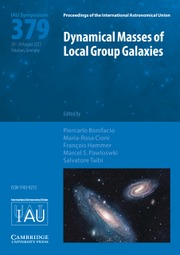Article contents
Modeling of the atmospheric response to a strong decrease of the solar activity
Published online by Cambridge University Press: 05 July 2012
Abstract
We estimate the consequences of a potential strong decrease of the solar activity using the model simulations of the future driven by pure anthropogenic forcing as well as its combination with different solar activity related factors: total solar irradiance, spectral solar irradiance, energetic electron precipitation, solar protons and galactic cosmic rays. The comparison of the model simulations shows that introduced strong decrease of solar activity can lead to some delay of the ozone recovery and partially compensate greenhouse warming acting in the direction opposite to anthropogenic effects. The model results also show that all considered solar forcings are important in different atmospheric layers and geographical regions. However, in the global scale the solar irradiance variability can be considered as the most important solar forcing. The obtained results constitute probably the upper limit of the possible solar influence. Development of the better constrained set of future solar forcings is necessary to address the problem of future climate and ozone layer with more confidence.
Information
- Type
- Contributed Papers
- Information
- Copyright
- Copyright © International Astronomical Union 2012
References
- 8
- Cited by

